Higher classification Privet | Tribe Oleeae Scientific name Ligustrum lucidum Rank Species | |
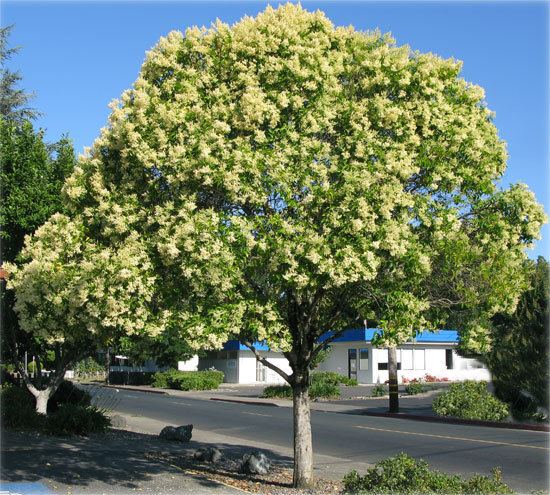 | ||
Similar Privet, Ligustrum japonicum, Ligustrum sinense, Oleaceae, Ligustrum vulgare | ||
Ligustrum lucidum glossy privet
Ligustrum lucidum (broad-leaf privet, Chinese privet glossy privet, tree privet or wax-leaf privet) is a species of privet (Ligustrum genus), a flowering plant in the olive family, Oleaceae, native to the southern half of China and naturalized in many places: Spain, Italy, Algeria, Canary Islands, New Zealand, Lesotho, South Africa, Japan, Korea, Australia, Norfolk Island, Chiapas, Central America, Argentina, and the southern United States (California, Arizona, Maryland, and the southeast from Texas to North Carolina). The name "Chinese privet" is more frequently used for Ligustrum sinense.
Contents
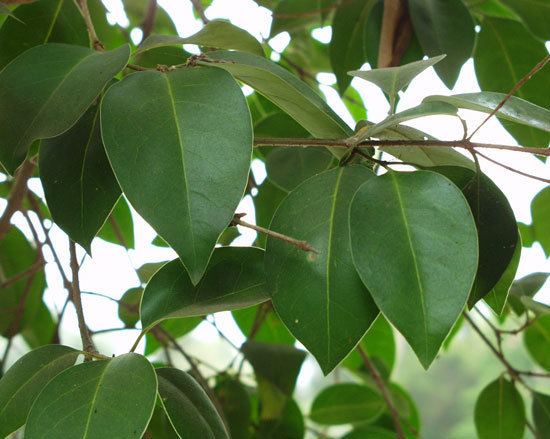
The Latin lucidum means bright or shiny, and refers to the glossy leaves.
Description
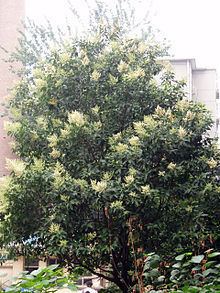
Ligustrum lucidum is an evergreen tree growing to 10 m (33 ft) tall and broad. The leaves are opposite, glossy dark green, 6–17 centimetres (2.4–6.7 in) long and 3–8 centimetres (1.2–3.1 in) broad. The flowers are similar to other privets, white or near white, borne in panicles, and unpleasantly pungent.
Ligustrum lucidum and the variegated cultivar 'Excelsum Superbum' have gained the Royal Horticultural Society's Award of Garden Merit.
Uses
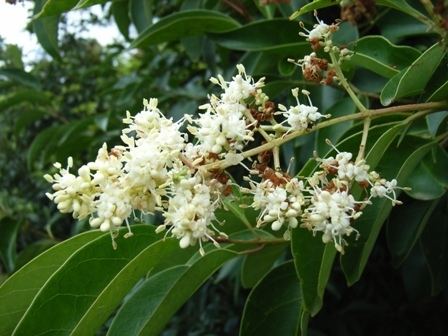
Ligustrum lucidum is often used as an ornamental tree, sometimes in variegated forms. However, it has become an invasive species in some areas where it has been introduced, such as urban areas in the southeastern United States. It is classed as a noxious weed in New South Wales, Australia, and is similarly listed in New Zealand's National Pest Plant Accord.
Ligustrum lucidum is also known to the West as the "wax tree privet".
Ethnomedical uses
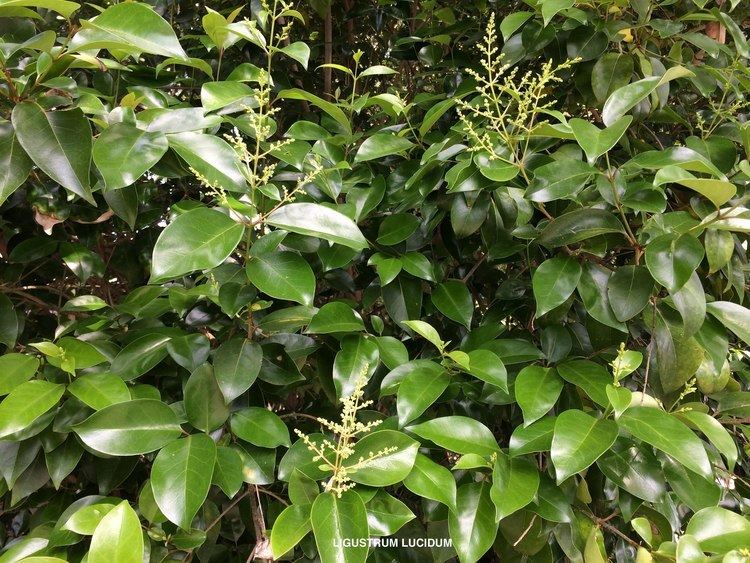
The seeds are known as nu zhen zi (female chastity seed) in traditional Chinese medicine and are believed to nourish liver and kidney yin and jing in the treatment of tinnitus (ringing in the ears), vertigo (dizziness), premature graying of the hair, and soreness/weakness of the lower back and knees. Due to the belief in the seeds' ability to nourish the liver, they are also used in the treatment of disorders of the eye involving red or dry eyes, blurred vision, and pain.
Chemical constituents
Chemical constituents of the seeds include oleanolic acid, nuzhenide, and ligustroside.
